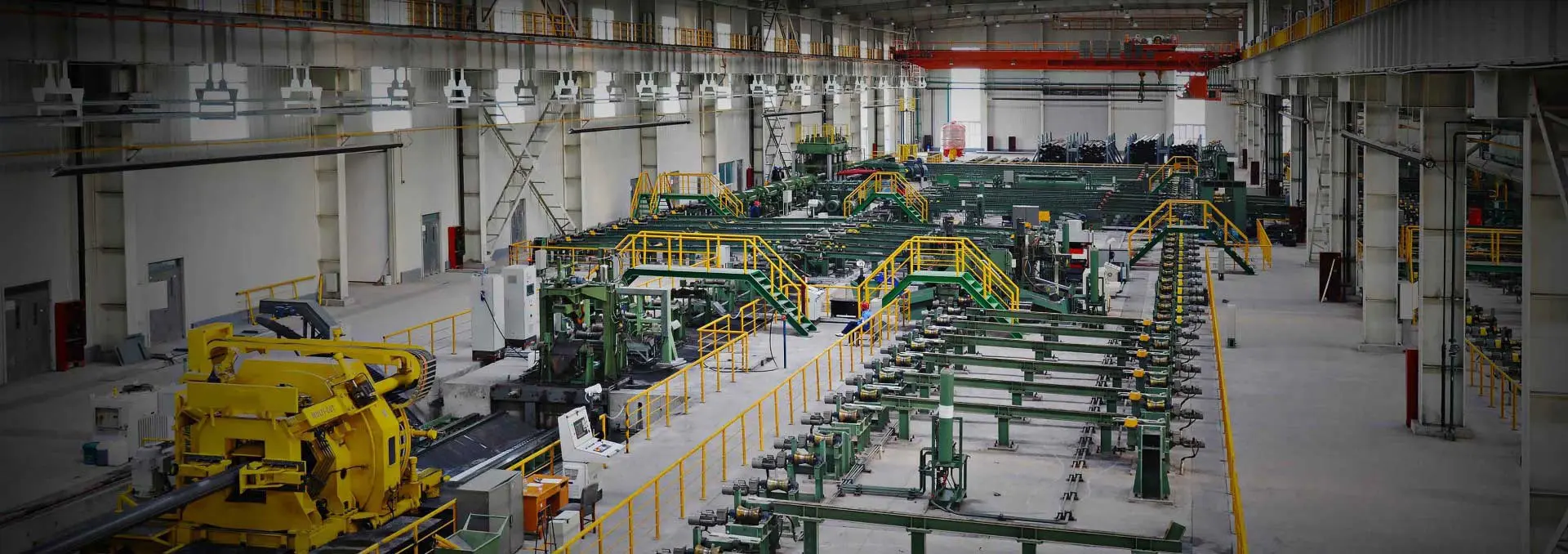ASTM A500 includes four main steel grades for hollow structural sections—Grades A, B, C, and D—each tailored to specific structural needs. These grades differ in chemical composition, mechanical strength, and typical applications, allowing for optimal material selection based on performance requirements. Below is a concise overview highlighting the key distinctions among these grades.
Union Steel Industry Co., Ltd is professional steel pipes manufacturer, for more details, please contact:sales@union-steels.com
Differences Among Grades of ASTM A500 in Chemical Composition
|
Chemical Composition(%) differences between ASTM A500 GR.A, GR.B, GR.C ,GR.D
|
|
|
GR.A
|
GR.B
|
GR.C
|
GR.D
|
|
Carbon (C)
|
for heat analysis≤0.26%
|
for heat analysis≤0.26%
|
for heat analysis≤0.23%
|
for heat analysis≤0.26%
|
|
for product analysis ≤0.30%
|
for product analysis ≤0.30%
|
for product analysis ≤0.27%
|
for product analysis ≤0.30%
|
|
Manganese (Mn)
|
for heat analysis≤1.35%
|
for heat analysis≤1.35%
|
for heat analysis≤1.35%
|
for heat analysis≤1.35%
|
|
for product analysis ≤1.40%
|
for product analysis ≤1.40%
|
for product analysis ≤1.40%
|
for product analysis ≤1.40%
|
|
Phosphorus (P)
|
for heat analysis≤0.035%
|
for heat analysis≤0.035%
|
for heat analysis≤0.035%
|
for heat analysis≤0.035%
|
|
for product analysis ≤0.045%
|
for product analysis ≤0.045%
|
for product analysis ≤0.045%
|
for product analysis ≤0.045%
|
|
Sulfur (S)
|
for heat analysis≤0.035%
|
for heat analysis≤0.035%
|
for heat analysis≤0.035%
|
for heat analysis≤0.035%
|
|
for product analysis ≤0.045%
|
for product analysis ≤0.045%
|
for product analysis ≤0.045%
|
for product analysis ≤0.045%
|
|
Copper (Cu)
|
for heat analysis≥0.20%
|
for heat analysis≥0.20%
|
for heat analysis≥0.20%
|
for heat analysis≥0.20%
|
|
for product analysis ≥0.18%
|
for product analysis ≥0.18%
|
for product analysis ≥0.18%
|
for product analysis ≥0.18%
|
The key variation among ASTM A500 grades is the carbon content, which directly influences mechanical performance:
Grade C has the lowest carbon content, enhancing its weldability and reducing the risk of cracking during welding.
Other elements such as manganese, phosphorus, and sulfur remain largely consistent across all grades.
Copper, when specified for copper-bearing steel, is also consistent across Grades A to D.
These chemical distinctions help tailor each grade to different structural needs.
Differences Among Grades of ASTM A500 in Mechanical Properties
Round Structural Tubing
|
Property
|
Grade A
|
Grade B
|
Grade C
|
Grade D
|
|
Tensile Strength
|
45,000 psi (310 MPa)
|
58,000 psi (400 MPa)
|
62,000 psi (425 MPa)
|
58,000 psi (400 MPa)
|
|
Yield Strength
|
33,000 psi (230 MPa)
|
42,000 psi (290 MPa)
|
46,000 psi (315 MPa)
|
36,000 psi (250 MPa)
|
|
Elongation (2")
|
25%
|
23%
|
21%
|
23%
|
Shaped (Square/Rectangular) Structural Tubing
|
Property
|
Grade A
|
Grade B
|
Grade C
|
Grade D
|
|
Tensile Strength
|
45,000 psi (310 MPa)
|
58,000 psi (400 MPa)
|
62,000 psi (425 MPa)
|
58,000 psi (400 MPa)
|
|
Yield Strength
|
39,000 psi (270 MPa)
|
46,000 psi (315 MPa)
|
50,000 psi (345 MPa)
|
36,000 psi (250 MPa)
|
|
Elongation (2")
|
25%
|
23%
|
21%
|
23%
|
Differences Among Grades of ASTM A500 in Performance
Grade A: Lowest strength, highest ductility—ideal for applications requiring flexibility over strength.
Grade B: Balanced strength and ductility—widely used in structural frameworks.
Grade C: Highest strength, lowest ductility—best for high-load, high-stress structures.
Grade D: Similar tensile strength to Grade B, but lower yield strength—suited for specific heavy-load applications where high tensile strength is critical.
Differences Among Grades of ASTM A500 In Application
ASTM A500 Grade A – Low-Stress, Non-Critical Applications
Interior framing and lightweight partitions
Temporary structures and supports
Low-load frameworks and auxiliary installations
Focused on cost-effectiveness and ease of fabrication
ASTM A500 Grade B – General Structural Use
Building frameworks
Structural columns and beams
Moderate-pressure piping systems
Ideal for residential and commercial construction
Offers a good balance of strength and cost
ASTM A500 Grade C – High-Strength Structural Applications
High-rise buildings and critical load-bearing elements
Industrial machinery and equipment
Bridges and sign supports
Chosen for demanding environments where strength and reliability are essential
ASTM A500 Grade D – Heavy-Duty and Infrastructure Projects
Large-scale and high-load construction
Critical infrastructure such as long-span bridges
Industrial facilities and support columns
Delivers maximum strength, suitable for the most challenging conditions
Conclusion
Selecting the right ASTM A500 grade is crucial to ensuring safety, performance, and cost-efficiency in structural applications.
Grade A: Best for low-stress, temporary, or non-load-bearing uses.
Grade B: Ideal for general structural use with moderate strength needs.
Grade C: Suitable for high-strength, load-bearing requirements.
Grade D: Reserved for the most demanding structural environments.
Understanding these differences allows engineers, fabricators, and builders to match the right material to the demands of the project—maximizing durability and performance while managing costs effectively.
For more: ASTM A500 steel pipe specifications

 English
English Español
Español




 Tel : +86-18565811709
Tel : +86-18565811709 Email :
Email : 
 News
News




